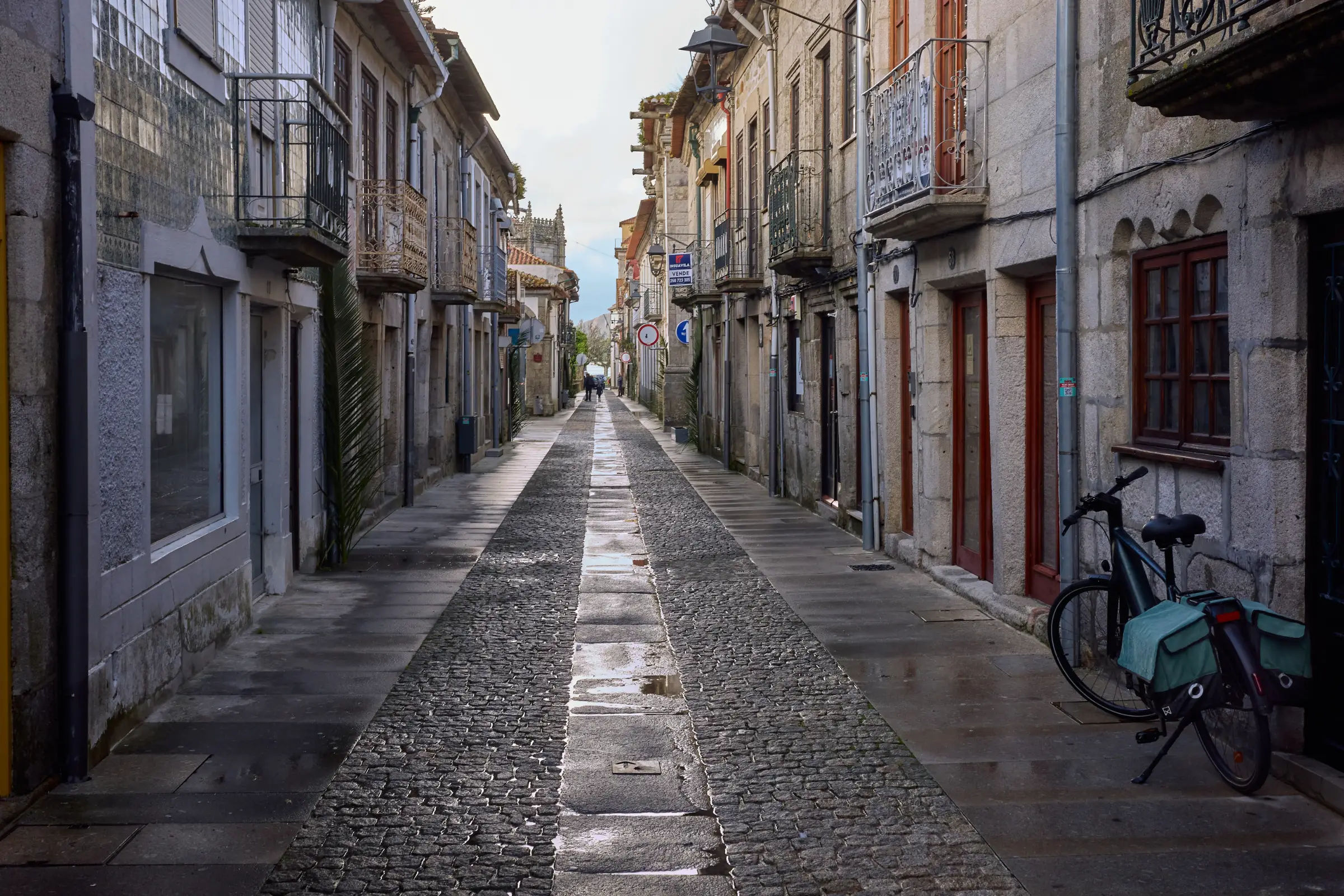We enjoyed Viana do Castelo, and after a good sleep, woke to a chilly morning and another (pretty good) hostel breakfast where I chatted with an American bloke from Arizona. They were taking it slow to Santiago, soaking it all in and loving every minute.

There are so many of these fleeting encounters on the Camino — a quick exchange, a shared moment, and then pffffft, never to be seen again.
My knee was still playing up a bit, so we opted to take the train for part of the way. A few Euros later, we found ourselves in Moledo — which turned out to be more than just “part of the way.” The trains are so warm and comfortable, I almost wished we had a full day’s travel instead. With time to spare, we holed up in a brilliant little café. The coffee was excellent. The owner… not so much. Properly dour.
The walk into Caminha started in the rain and ended in sunshine. The way was mostly flat — but not along the coast — through a mix of semi-rural and suburban sprawl.
We arrived in Caminha early, checked out where tomorrow’s ferry to Spain’s A Guarda would be departing from, then wandered the pretty town with its classic square. Another stop at a quaint ‘locals only’ café padded out the afternoon until the BnB opened.
The BnB, in the scheme of things, was expensive and pretty rudimentary — small rooms, no extras. It had the air of a seasonal cash grab. Perhaps Easter prices were in effect.
Back into town for dinner, we wandered through almost empty streets, save for the odd pilgrim. We ended up in what was probably an unsuitable-for-pilgrim (expensive) restaurant, but the food was delicious and the view over the Minho River was hard to beat.

A low-key, easy day — and our last night in Portugal before crossing into Spain tomorrow.